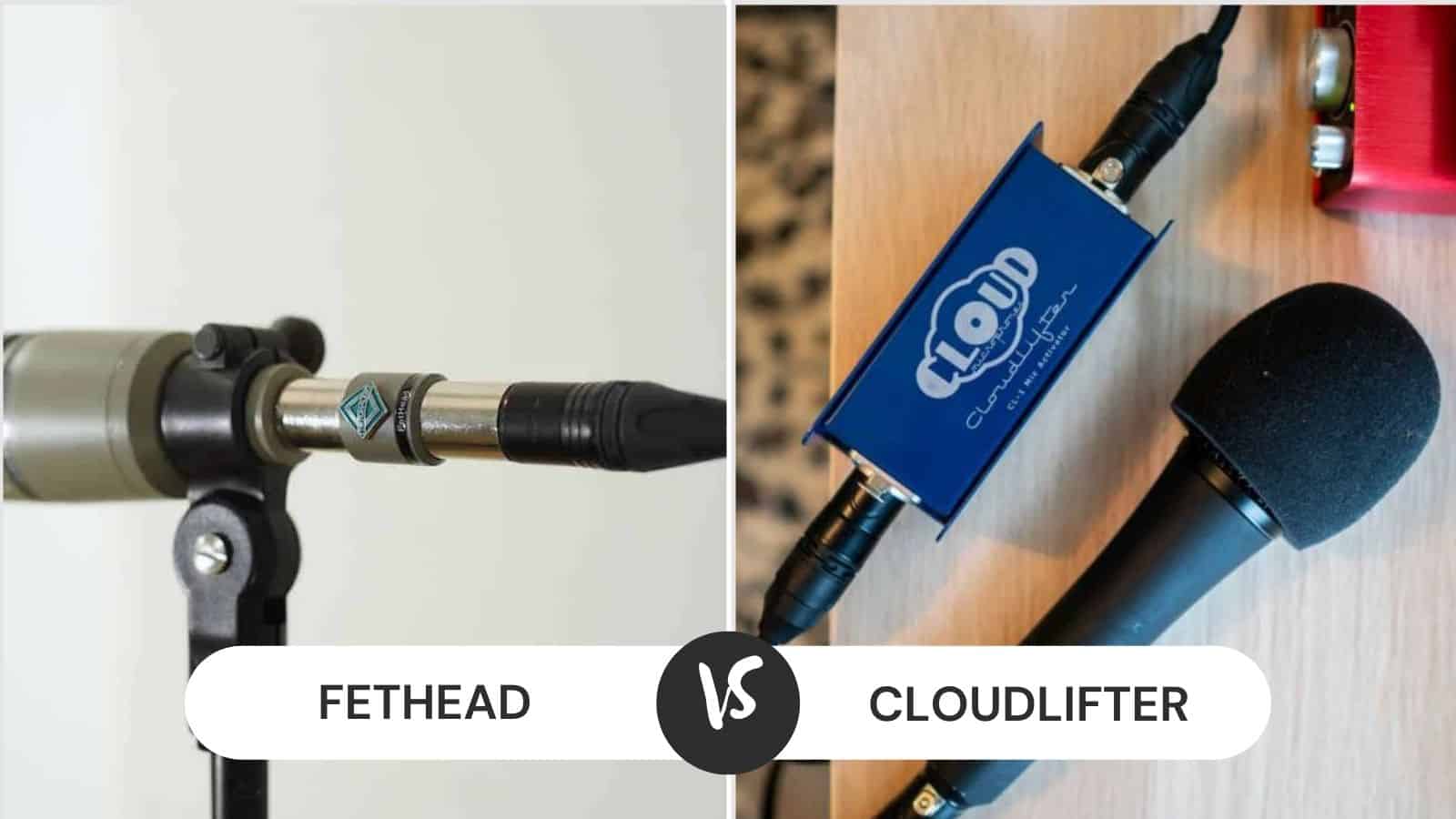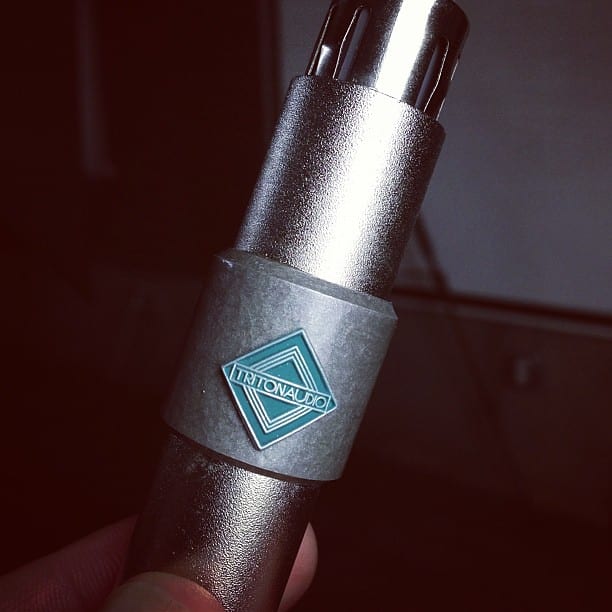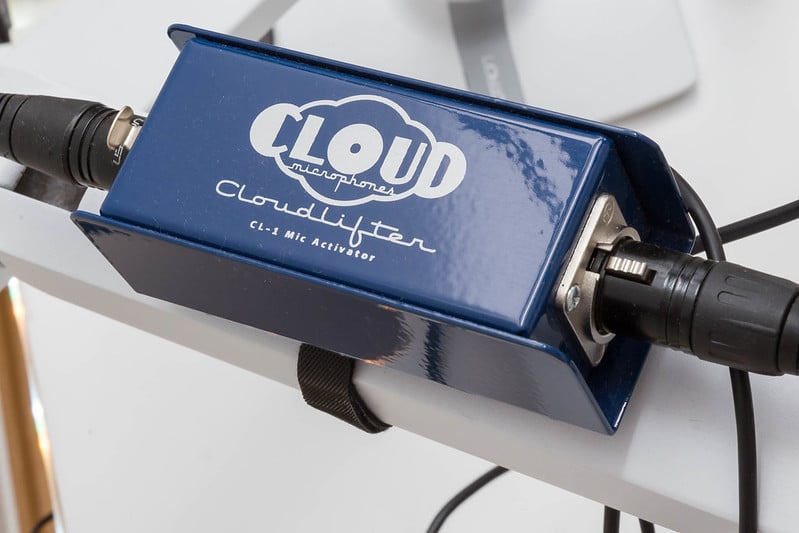
The musicians need to be extremely particular about the audio experience because the audience won’t bear the distortion and extra-loud music. For this reason, choosing the right mic is essential as it helps ensure better audio quality.
A mic helps with recording and makes sure that the background noise is eliminated, leading to clear sound output but it needs a mic preamplifier to achieve these results.
FetHead and Cloudlifter are two amazing mic preamplifiers available for musicians and both of them have significant features that you need to know about!
Comparing the Fethead vs Cloudlifter
| Features | FetHead | Cloudlifter |
|---|---|---|
| Channels | 1 | 1 |
| Input & Output | 1 XLR each | 1 XLR each |
| Gain | 20 dB to 27dB | 25dB |
| Depth | Not specified | 4.5 inches |
| Weight | 0.12 lbs. | 0.85 lbs. |
Fethead
The FetHead was designed to boost the audio signals by over 20dB before it hits the mic-pre, promising cleaner recordings and less gain.
For this purpose, it has two pairs of JFET connected as a class-A amplifier with a double configuration – it is an extremely clean pre-amp and works through the phantom power.
The phantom power doesn’t pass through FetHead, which means you can use it with a ribbon microphone, eliminating the chances of damage to the mic.
1. Functionality
FetHead can retain the signals at a microphone level, which makes it suitable for the input of the mic. Then, it changes the signal from the mic level to the line level.
Connecting FetHead to the microphone will help improve the sound quality, so it can be utilized for opening up the sound, leading to an airy vocal experience.
To use FetHead, the mic-pre amp needs to have 500 ohms to 1000 ohms of input impedance to achieve the 20dB gain. This is because if the input impedance is lower than 500 ohms, the gain level will significantly decline.
It can be used for recording in rooms with harder surfaces and higher ceilings (such rooms have challenged acoustics).
In addition, it works well with dynamic and ribbon microphones. In particular, you can only use it with the mic that has phantom power but it can block the phantom power from passing through the mic, making it safer to use.
It is connected to the XLR connection of the mic and will not create any intrusions when it is installed. In addition, it can add weight to the mic and extend the length.
It can also be connected to the boom arm and shock mount, so it will be fine for every setup. Once installed, it can enhance the presence and clarity of the audio, which means high-quality results.
However, you must remember that it doesn’t work with a USB-only mic because those microphones don’t create phantom power.
It has the capacity of reducing the impedance load on the mic, resulting in improved transient response and the range will be extensible.
2. Build
FetHead has to be connected with the ribbon or dynamic mic because they create phantom power, which is critical for FetHead to function.
However, if you have a USB mic, you will need an interface or a mixer for generating the phantom power, which increases the setup costs. When connected to the right mic, it will result in low-noise outcomes.
The preamp is integrated with a high-quality metal chassis, making it a durable choice.
The preamp is integrated with three well-balanced three-pole XLR inputs with female configuration and male configuration to streamline the connection. Also, the unit can be used for full-scale studios as well as podcasts.
It has the capacity of yielding 27dB sound amplification and has two single-ended amp technology that streamlines the asymmetrical transmission and transfer function. In addition, it ensures that there is no sound canceling.
The preamp has four JFETs, which improves the input impedance and will make the preamp equally suitable for small rooms. In addition, these are low-power components and consume less space in the circuit.
As far as the power consumption is concerned, it consumes 24V to 28V phantom power and has a shielded design to ensure a top-notch build. FetHead is available in three different versions, including the regular version, phantom version, and filter version.
It has been integrated with the FET technology that is responsible for amplifying analog and digital signals. Having said that, it will be able to yield clean signals with improved sensitivity, low noise, and better transient response.
As far as the installation is concerned, it can be placed anywhere between the console, preamp, or mic. Last but not least, the circuitry is enclosed in a high-end metal chassis and employs balanced I/O to streamline the audio signal interpretation.
Pros
- Exceptional gain of 20dB to 25dB
- Higher presence and clarity in the source
- No background noise
- Connects with XLR connection
Cons
- It demands phantom power to work
Cloudlifter
Cloudlifter is known to power the ribbon and dynamic mics and you won’t have to install a USB interface. For this reason, it’s known as a preamp that improves the microphone signal quality.
In simpler words, if the recordings seem too quiet or turning up the volumes make the outcome noisy, you can use Cloudlifter to streamline the audio output.
In case you have mismatched equipment, you can squeeze out the volts of the computer by utilizing the phantom power of the interface with the help of a 48V button on the front side.
1. Functionality
When the phantom power is toggled on, the Cloudlifter will transform the phantom power into 25dB of gain without adding any disruptive or cranking sound.
This preamp is a great choice for people who want to record the audio content themselves but don’t have the right mic. This is because Cloudlifter is a promising way of maintaining high-quality recording.
Similarly, it’s a great option for people who can only afford to purchase one mic or a stopgap for a comprehensive interface.
Cloudlifter is a great choice to achieve the 25dB of powerful and clean gain in the recording. This is because it can transform the phantom power into transparent and clean gain, and works well with noisy preamps and long cable connections.
It’s safe to say that it can transform any preamp into a ribbon preamp with high-gain functionality. In addition, it can help maximize the gain staging without spending thousands of dollars.
It can provide the gain that amplifies the signal of the mic to produce clean recordings and you will be able to take advantage of the ribbon mic or enhance the overall outcomes of the low-output mics.
The preamp has an efficient functionality, so you can achieve the sound levels without any crackling or hissing noises.
2. Build
The preamp is designed with an active circuit that is powered by phantom power or the console. In particular, it has cutting-edge JFET circuitry, which is carefully selected to preserve the natural sound of the mic and help protect the tone.
Given this high-end build, it can work in multi-room studios, auditoriums, and large recording rooms, even if the cables are long. This is because the preamp amplifies the signals, so the length of the cables won’t make a difference.
It tends to boost the audio signals at the source, which means the longer cable run will not sap the vitality of the signals. The best thing about using Cloudlifter is that it has a free lifetime warranty for the labor and parts but you must register the device.
Pros
- Balanced input and output
- Clear sound output
- Preserve the natural sound
- Works with long cable connections
Cons
- Not durable
The Final Verdict
There are no bells and whistles associated with FetHead and makes a great option for people using the ribbon and dynamic mic.
This is because it can enhance the sound quality of the recordings and want to fix the poor acoustics of the room and has a higher audio gain.
On the other hand, Cloudlifter is a suitable choice for people who want to turn their low-gain mics into ribbon mics while delivering transparent audio.




